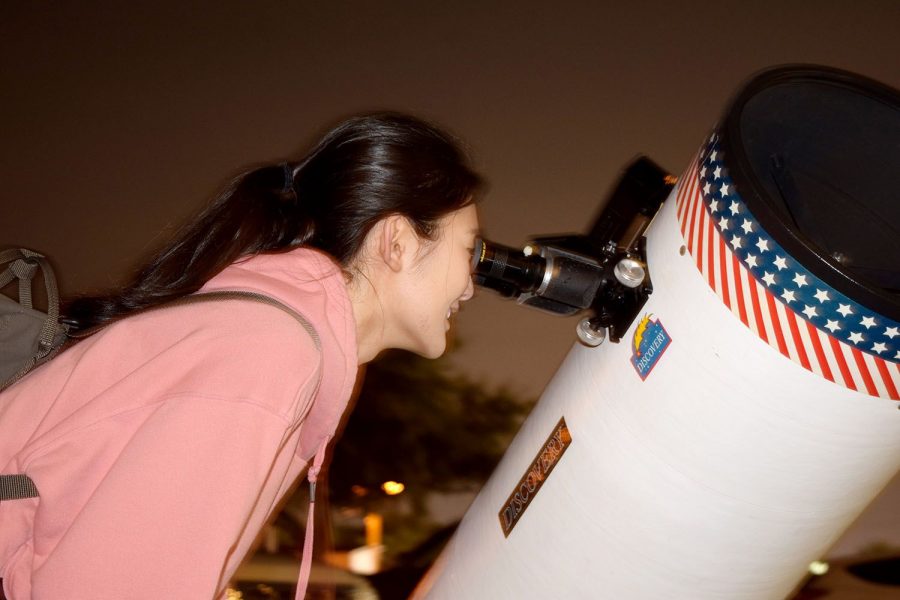Students unite over astronomy
Gazing at a star, senior Ashley Cha studies the different textures and colors in the student parking lot Jan.15. The light coming off the star observed takes 14,000 years to reach earth.
Tuesday night at 8, in the grassy portion of the field between the front parking lot and new building, a small gathering appears as temperatures drop to 50 degrees and the black cover of night rolls in. The usually vacant lot has visitors peering through telescopes aimed at the stars, cold fingers grasping the large metal viewing devices.
These space-oriented stargazers are none other than members of the Astronomy Club.
“I’m kind of interested in the stars, and I always have been since I got into Greek mythology and stuff,” freshman Abby Larkin said. “It’s really fun. I really enjoy hanging out with my friends there and looking at the different stars and stuff. They always bring little snacks that are astronomy-based, and it’s really cool.”
The club was first introduced to Plant in 2003 by former chemistry teacher and club sponsor Jill McDannold.
“We’ve had a lot of times that people come out here and they’ve never looked through a big telescope and their jaw drops, and they just say, ‘wow,’ and you know that they’re looking at the moon, and they can see the details, and they can see the craters, and they get it,” McDannold said.
McDannold, though retired, is still an avid supporter of the club along with her husband Roy. The two together provided and tended to the telescopes, growing the club to what it is today – and they continue to attend astronomy meetings.
“It’s very student led and I think that’s important in any club,” said Jeffrey Keene, chemistry teacher and current club sponsor. “If you have any students interested in math, or interested in engineering and even the medical field, you can apply all those areas to astronomy and the study of the stars.”
Today the club consists of 40 members. The meetings include an arrangement of food, a briefing of information about the stars and solar events provided by the board, and telescopes for viewing the sky and visible planets.
“I’ve been in this club for a long time, and I’ve always had a weird fascination with space, and I felt that it was really important that other people know what we’re all about and just had fun,” senior club president Dawson Lund said. “I want people to feel accepted more than anything and to make a close-knit community.”
This year the club hopes to arrange a field trip to the observatory at the Museum of Science & Industry Keene and Lund said. Lund also said she has hope in the club growing in members while retaining the closeness of the current group.
“I especially like looking at the moon because you can see all the details,” sophomore Finn Watson said. “We are on a small Earth and there are millions and trillions of things out there that could and do affect us every day.”
Whether it’s learning about the stars, chowing down on some moon pies or peering through a telescope, astronomy meetings range throughout the year. While the medium-sized city of Tampa doesn’t offer perfect clarity for star gazing, tracking the sky remains an important aspect of the club to many members.
“I joined the astronomy club to look at the night sky since I’ve never used a telescope before then,” junior Hayden Watson said. “Astronomy club helped me see some of the galaxy, and I thought looking at space was worth the cold.”


